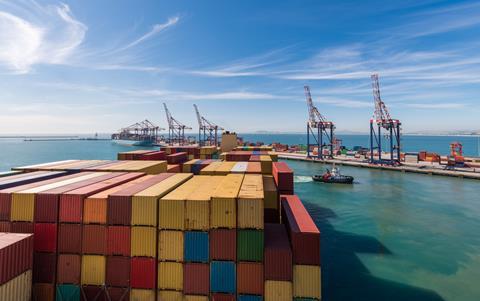The country’s fresh fruit exporters are enjoying mixed fortunes, while the courts are set to get involved over port problems
The South African grape harvest is running ahead of predictions while the pomefruit and stonefruit industries are heading to court to recover losses from shipping authority Transnet.

The citrus industry, which is due to start shipments in April, said that it hoped much of the current problems would be resolved by then.
All three major export sectors have reported better crops than last year, and it is expected that pressure on the country’s ports will increase as the industry progresses towards the middle of the year.
So far it has mainly been problems at the port of Cape Town’s container terminal which has affected grape and stonefruit exports.
According to the latest reports, the country’s grape producers have packed 17 per cent more so far this season compared with last year. However, exports until week 2 were 10 per cent lower than in the previous season.
“By the end of week 2, 33.8m cartons (4.5kg equivalent) were inspected for export, which is 17 per cent more than the same time last year,” said industry body Sati. “A total of 17.3m cartons (4.5 kg equivalent) were exported up until week 2, which is 10 per cent lower than the previous season to date.”
This is the largest difference between inspected and exported volumes that has been observed to date.
Meanwhile, the stonefruit season is now heading into its peak, with pear and apple shipments quickly picking up.
“There have been improvements in the container terminal in Cape Town,” said Hortgro’s chief executive Anton Rabe. “But we are afraid it is too little too late.”
Rabe pointed out that problems had been dragging on for four years and calculated that growers had lost more than R2bn per year during the past two export seasons. “We simply have to recover these losses,” he noted.
Sati said the latest export figures did not tell the full story because grapes shipped after week 2 had not yet been included in export figures. It would seem therefore that the deficit between what was packed and exported has improved considerably since week 2.
“Figures from vessels which sailed after week 2 are not yet included in the reported volumes, for example a vessel carrying 1.3m cartons sailed during week 3,” Sati explained. ”Delayed operations in the Port of Cape Town contributed to large vessels which had not yet sailed out of Cape Town, collectively carrying 6.5m cartons of grapes.”
This includes the vessel Santa Clara, which departed from Cape Town this past Sunday (21 January) with all planned reefers on board.
“A total of 4.3m cartons (4.5 kg) table grapes are on board, destined for the EU,” the industry body said, adding that there was around 6.3m cartons in cold storage at the time the report was finalised.
“The harvest is progressing extremely well, and all regions have reported good berry size, colouring and quality facilitated by favourable weather conditions,” it continued. “A bottleneck is expected beginning to mid-February, as many cultivars are expected to come into production. As part of continuous engagements, the industry has brought the expected increase in volumes to Transnet’s attention.”
Elsewhere, Justin Chadwick, CEO of the South African Citrus Growers Association, gave his first outlook of the season.
“There certainly is a potential for another record-setting volume of citrus exported this year,” he said. “As things stand now, our growers have, under difficult circumstances, ensured that there will be large volumes of citrus when harvesting truly ramps up starting in April, supplying consumers around the world with our sought-after fruit.”



